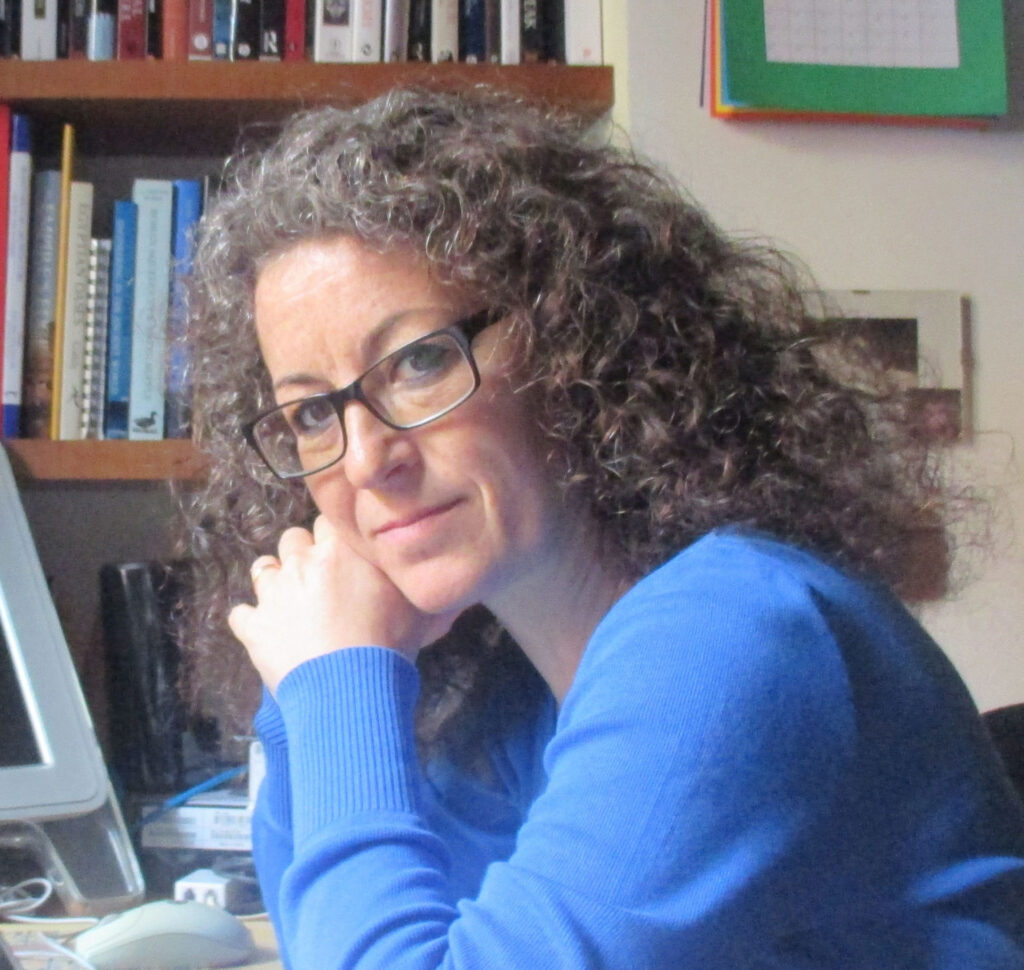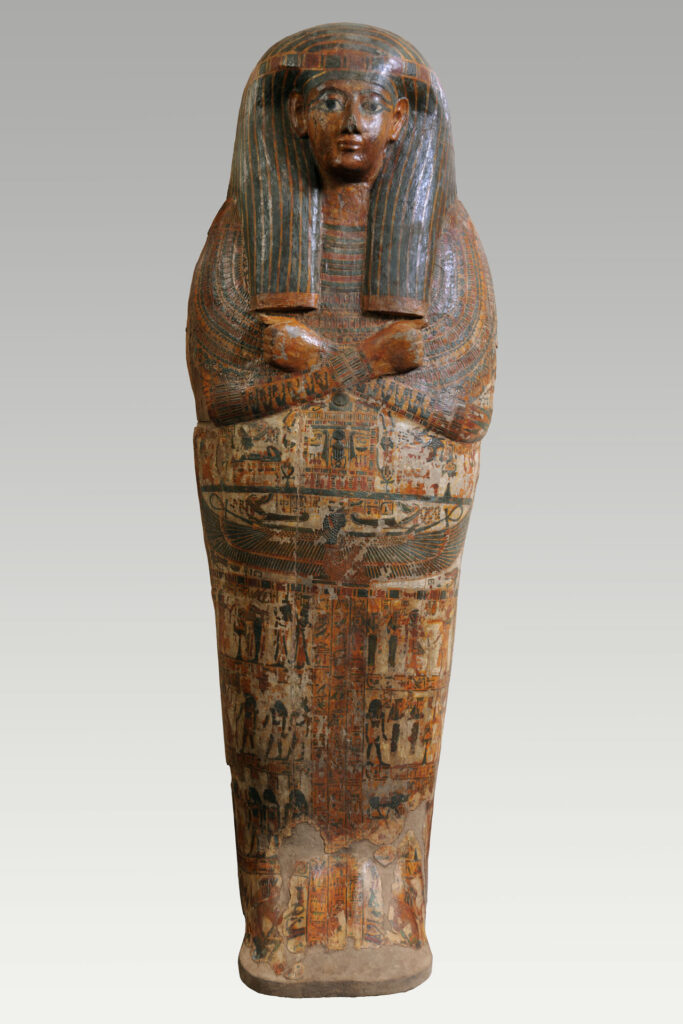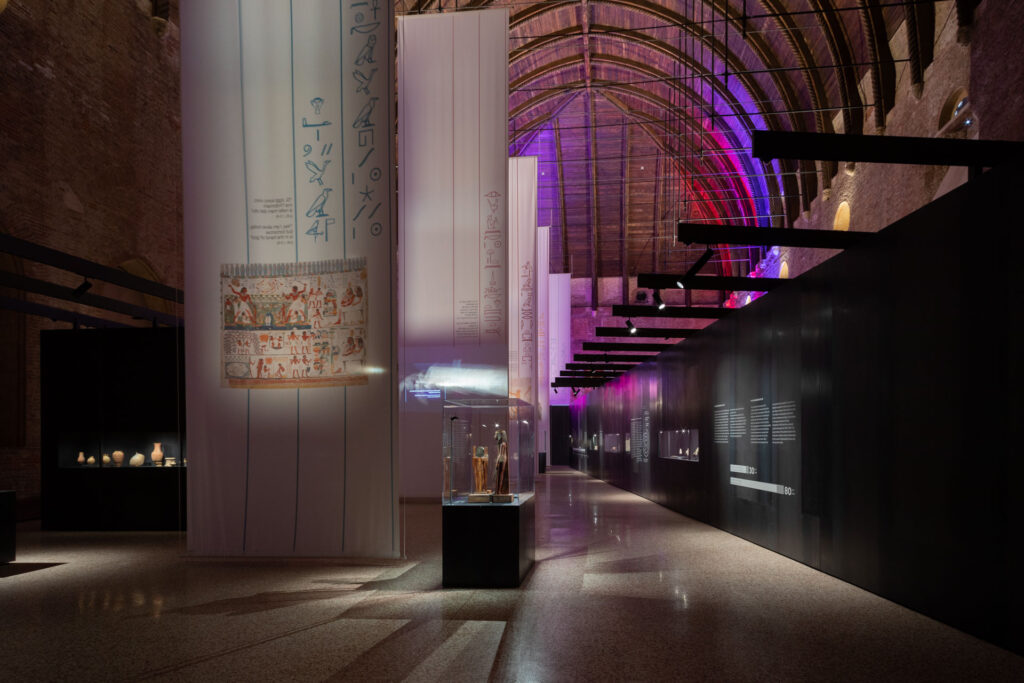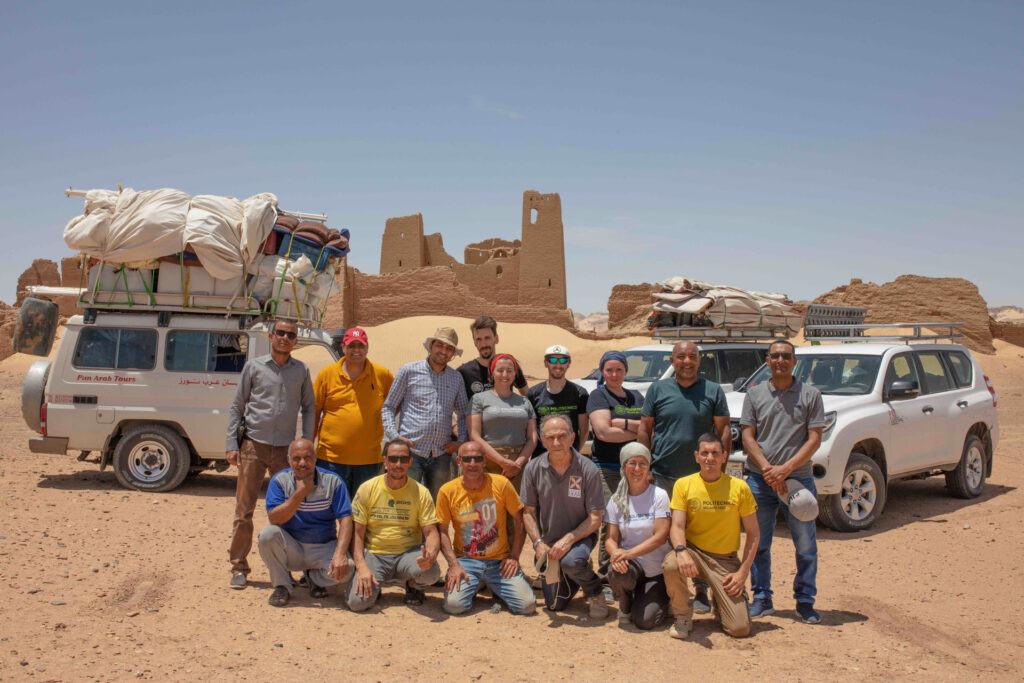From the Politecnico di Milano to Ancient Egypt, the step is short: since 2018 our university has entered into a collaborative relationship with the Fondazione Museo delle Antichità Egizie in Turin (Museo Egizio or Egyptian Museum) to promote the museum heritage on the one hand, but also to give students and researchers of the Politecnico the possibility of contributing to this promotion. A work that through the digital humanities subject matter is bearing fruit. But what does it consist of? How is it developing? We asked the coordinator of the project, Corinna Rossi, professor of Egyptology and Coptic Civilization at the Department of Architecture, Built Environment and Construction Engineering.
Tell us a little about your academic and professional career that led you to deal with ancient Egypt
‘I have been passionate about Ancient Egypt since primary school, I still remember the illustration of the Pyramids of Giza on the primary school textbook and when I visited them when I was 13.
When I enrolled at the university, I chose architecture, because it allowed me to study scientific subjects and humanities at the same time, and I embarked on the path of architectural history, graduating with a thesis on Ancient Egypt. At that point I decided to specialise in Egyptology. I moved to England, to Cambridge, for 7 years, where I followed a master’s degree in Egyptology, then a PhD and remained as a junior research fellow at Churchill College.
After the birth of my two daughters, I won an ERC Consolidator Grant and my life took a turn, settling at the Politecnico di Milano. Six years later, the appraisal I can make is extremely positive: the Politecnico has been able to welcome me in the best way, giving space to my peculiarities as a person who works by combining various academic fields and disciplines. The area in which we now move is that of Digital Humanities: I continually bring together different pieces of research to understand if they work and how.’

Politecnico di Milano and ancient Egypt: an unprecedented connection.
‘In the collective imagination, the Egyptologist is a sort of know-it-all, a vision handed down from these first 200 years from the origin of the subject with the deciphering of hieroglyphs. However, we do not expect a single professor to teach all aspects of Greek or Roman culture. In reality, we Egyptologists have evolved in many different directions within our community: some deal with more technical issues, some dig in the field… it is an extremely multifaceted community.
The more ‘technical’ aspect of research on Ancient Egypt is developing thanks to people who mix different disciplinary fields, bringing a contribution to the understanding of the discipline. It is interesting to understand what new actions can be undertaken with these new tools and to establish a dialogue between new technologies and archaeology in which the latter is not a passive receptor of innovation’.

How did the collaboration with the Museo Egizio of Turin come about? What are the results achieved so far?
‘The Museo Egizio is a special museum and thanks to its director Christian Greco it is an institution that has overturned the very concept of a museum by starting a path that has certainly already borne fruit and will bear more.
The museum has a collection of objects that are all ‘silent’ and the way to make them ‘talk’ is to retrieve information from them and communicate it to the outside.
The exhibits have more than one story: they were created by someone, used by someone else and then lost, forgotten, buried, put away. They have been found for reasons by certain people, they have been studied or not, they have been hidden, sold, they ended up in a museum and now they are in a showcase of this museum.
We often use the term ‘museum piece’ to refer to outdated objects. The museum is instead, an active place, for research, which can complete the traditional teaching activity. Our collaboration makes it possible to bring in external expertise and give them a field of application, a really perfect match. We also try to study ways to involve the various types of museum audiences.
As far as ancient Egypt is concerned, two aspects are really very difficult to communicate to the public. The first is time: Egyptian civilization covers about 30 centuries of history, 3000 years, that’s a lot. The second is space, i.e. re-contextualization. We always see these objects separated from their original context.
New technologies can be an additional key to understanding, through experimentation, and the university is the ideal environment for doing this. We have established this extremely fruitful collaboration with the Museo Egizio in Turin, in which we experiment together, listen to their needs and try to offer solutions, but also propose something new to be tested to open new research directions. An extremely productive interaction, focused on the scientific result.
We have created a series of three-dimensional models of objects that have been used both for dissemination and research purposes. For example, the sub-millimetre relief of Butehamon’s sarcophagus, which we created in 2018, was one of the cornerstones around which a video mapping installation was created for the ‘Invisible Archaeology’ exhibition, which is now on display in Vicenza.
In the field, we supported the Museum in Saqqara on a series of tombs from the New Kingdom, experimenting with the three-dimensional relief of the stratigraphic excavation. Over time, together with them, we have identified a workflow to be adopted for the three-dimensional recording of the state of the stratigraphic excavation’.
You mentioned Saqqara, Egyptian archaeologists have just found a new tomb there. A mummy belonging to a man named Hekashepes who lived about 4,300 years ago was found in one of these tombs. Are there many treasures still hidden?
‘Yes, definitely. We follow the Museum technicians in the excavation and we will be back with them in the coming months. It is believed that only 1/3 of the necropolis has been explored in modern times. Obviously, it can’t be said that the remaining 2/3 are all intact tombs, far from it, but there is still a lot to discover.
In reality, the consideration is not on what we will find, but until when to continue digging the whole necropolis: archaeological excavation is a destructive operation which is accompanied by the work of conserving the objects, of communication to the outside, to avoid that what was found passes into oblivion. The reasoning mainly concerns human remains because they belong to people who spent the time, energy and money in their era to be buried in a tomb where they could live their eternal life, the ‘Home for Eternity’ as they called it. There are tens, hundreds, thousands of finds excavated over the last two centuries lying in museum warehouses, if only we could take advantage of, and study those more too.
To this has been added, over the years, the debate on the return of the finds. Most of the museum exhibits were collected when there was no excavation ban in the 19th century, or in the subsequent phase of the so-called ‘partage’, the obligation of fair distribution between Egypt and the country of destination. Now there is an absolute ban on exports. The mass return of objects is also problematic, because in reality they are also part of the history of the colonizing country: if it returns all the objects, it forgets that it was a colonizer. The problem of decolonizing archaeology cannot be simply solved by returning the objects to their places of origin, because museums annually invest resources and very advanced expertise to best conserve these objects’.
From the point of view of the digitization of the Museo Egizio, are you working on any particular project?
‘The fundamental point is that the object must remain central. A digitization process to produce digital images of objects is a useful documentation practice, but one that cannot be reduced to thorough scanning and the creation of three-dimensional images. The survey, the archaeometric analysis, the modelling of the object are the starting point for the research, not the arrival point: how do we visualize these three-dimensional archaeological layers? How do we section them? How do we get the information out of them? A problem that from Egyptological has become computerized.
I see augmented reality as more productive and more immediately feasible than virtual reality. Of the latter, the implementation costs and the enormous digitization work to start with, but also the construction of the contents, which are not the classic written contents, are always underestimated. The theme is to recruit new professionals’.

Did you also use technology in the exhibition ‘The creators of eternal Egypt’ underway in Vicenza?
‘We were inspired by the previous year’s exhibition, “The Renaissance Factory”, which dealt with how the union between technical knowledge and humanistic vision had been created in Vicenza. We thought of an exhibition focused on the workers of the tombs in the Valley of the Kings because they were those who combined technical knowledge with the possibility of creating these paradigmatic tombs: the tomb of the Pharaoh was the most important of all and therefore had to reassure, represent the passage from this life to eternal life. A second aspect was the need to dialogue with the Palladian Basilica. The exhibition was designed to have the objects arranged in a path, life before death, and life after death on the other side. Three multimedia installations expand upon, open a window, allow the visitor to look beyond the exhibition, but starting from the objects. The first multimedia installation is right at the entrance to the exhibition itinerary, with a video journey made with Google Earth, from the Basilica of Vicenza to Egypt which is simultaneously a journey through time. The set-up has 5 vertical banners pointing upwards on which the director himself chose the sentences to be written, like 5 hieroglyphic bookmarks that mark the story.
A silent video was projected onto one of these, while the video created by Robin Studio on Papyrus 1885, the plan of the tomb of Ramses IV in which we see this transformation of the tomb, is projected on another.
Nel punto in cui si passa dalla vita alla “vita eterna” abbiamo deciso di posizionare un sarcofago con la mummia al suo interno, il culmine della materialità. Il sarcofago di Tariri è messo accanto ad un altro sarcofago vuoto. Un momento che porta a riflettere sul fatto che con gli scavi si va comunque ad aprire una necropoli, un luogo sacro.
The highlight of the exhibition is the completely virtual video mapping installation on the Butehamon sarcophagus, which tells how this sarcophagus is actually composed of various pieces put together, including pieces of other sarcophagi, and makes us reflect on the function of the sarcophagus.
Both videos are drawn around the music of Hans Zimmer, with soundtracks from Interstellar and Inception. The music in this case is not just a background but an integral part of the narration’.

We have talked about your collaboration with the Egyptian Museum in Turin, but you are also involved in another big project, LIFE (Living in a Fringe Environment) which is a joint effort between the Polimi and the University of Naples Federico II. What is this project about? What will the future developments be?
The LIFE project is funded by the ERC Consolidator Grant that I was lucky enough to be awarded in 2015 and focuses on an archaeological site that is somewhat unusual compared to the Egypt known to the general public. It is in fact a Late Roman fortified settlement built not in the Nile Valley, but in the Western Desert, along what was then the border of the Roman Empire
The modern name of the site is Umm al-Dabadib, and it is located 50 km from the town of Kharga, the capital of the oasis of the same name. To get there, you travel along a track amidst sand and rocks, which is sometimes erased by the sandstorms. The site is nestled at the foot of the escarpment that closes the oasis to the north, where it is easiest to reach the aquifer. Although there is no spring, the site is rich in vegetation and ancient trees.
The archaeological remains include an early Roman settlement, and another from the Late Roman period, clustered around a small fort with two 12-metre-high square towers. One of them still contains the staircase that led up to a window overlooking the entire southern plain, beyond which began the territory that was no longer under Roman control.
The settlements make up only half of the archaeological remains: a fundamental counterpart to the community’s presence was the impressive agricultural system that allowed the community to live there, which included an elaborate system of underground aqueducts that carried water to the fields by gravity and a vast cultivated area. Interestingly, the network of fields is practically invisible in situ except at a particular time of day, that is a few minutes at sunset if the low-lying sun is not covered by clouds or swirling sand. Otherwise, the fields are perfectly visible from satellite images.
The symmetrical coexistence of the built environment and the agricultural system is reflected in the organisation of the project: the Politecnico di Milano studies the settlement and the related material culture, while the Agricultural Museums at the University of Naples Federico II studies the agricultural system in its entirety. These two elements were like two sides of the same coin, as one could not exist without the other and one was the raison d’être of the other.
The ERC project has now come to an end, but the study and research focused on Umm al-Dabadib will continue: the EU-funded project has borne fruit, and these fruits in turn have produced other seeds, which will germinate in the near future. Of all the discoveries still to be made there, one interests me more than others: discovering the ancient name of the site, which we still do not know.”
